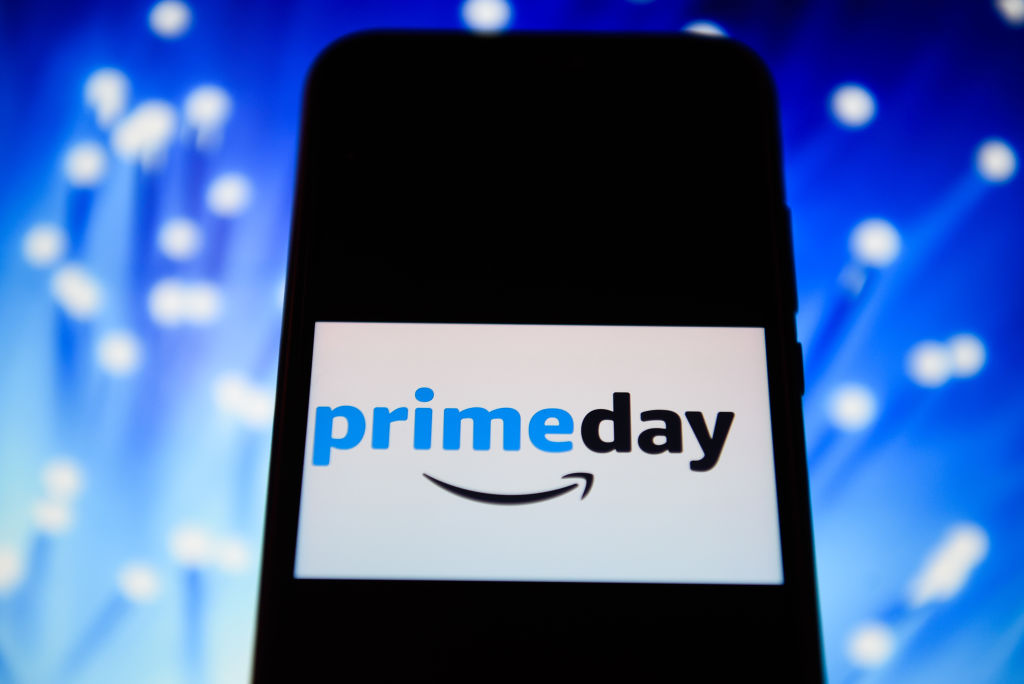Easy Ways to Earn Cash Back When Holiday Shopping
Give yourself the gift of saving by taking advantage of cash-back sites, apps, credit cards and rebates.

Wouldn't it be nice if you got paid every time you bought something during the holidays? Well, you can—if you shop right. In fact, there's more than one way to earn cash back on purchases during the holidays, when the average shopper is expected to spend $805 to celebrate the season, according to the National Retail Federation.
"This time of year, you'll see a big storewide discount, and if you're making a fairly big purchase, that's when the cash back can really pay off," says Brent Shelton, founder of deal site FatWallet.com. "The more you're spending, the more cash you're gonna get back."
Cash-Back Web Sites
Almost half of your holiday shopping is likely being done online. And all it takes is a couple of extra clicks to save using cash-back Web sites, such as Ebates, FatWallet.com and Splender, which allow you to recoup a portion of the money you spend on qualifying purchases. Simply register for free with each site. Then, click on any of the sites' retail partners to start shopping. If you buy something, the cash-back site earns a commission and shares part of it with you.
From just $107.88 $24.99 for Kiplinger Personal Finance
Become a smarter, better informed investor. Subscribe from just $107.88 $24.99, plus get up to 4 Special Issues

Sign up for Kiplinger’s Free Newsletters
Profit and prosper with the best of expert advice on investing, taxes, retirement, personal finance and more - straight to your e-mail.
Profit and prosper with the best of expert advice - straight to your e-mail.
Cash-back deals vary greatly, so how much you stand to earn while shopping depends on a lot of factors. You can beef up savings by shopping around and buying based on the best deals you find. (Plus, you can combine cash-back rewards with coupons and other discounts to score even bigger savings.) For example, on FatWallet in early December, we found cash-back rewards ranging from less than 1% at Victoria's Secret to 27.5% at Angie's List. Some retailers offer rewards in dollar amounts rather than percentages. Verizon, for example, was offering $150 cash back in early December.
How do you get paid? All three sites mentioned earlier issue payments by check or through PayPal. At Ebates, you can also opt to send your cash-back check to a charity, organization or family member.
When do you get paid? It depends on the merchant. It may credit your account within 48 hours of purchase, but it can also take up to 90 days to do so. If it's been more than 30 days, you should check in with the cash-back site. At Ebates, once the credit is available you get paid quarterly whenever you earn more than $5. With FatWallet.com, you can request a payment any time you have accumulated $10 or more. Splender holds your cash-back for 45 days, in case you return the purchase. After that, you get paid on the last business day of every month, if you've earned $10 or more.
Cash-Back Mobile Apps
If you prefer to do your shopping on the move, try a free cash-back app. FatWallet's Cash Back mobile app works just like its site, but is more focused on shopping by store rather than by deal. The Ibotta mobile app is different. You have to complete "fun tasks," such as answering survey questions, watching video ads and checking out recipes, in order to unlock possible cash-back rewards before you do your shopping. Then, if you're shopping online, you select the store you want to go to and click the button to get a redemption link emailed to you. Once you get the email from Ibotta, click on the link to open the retailer's site and start shopping.
Your cash-back rewards typically appear in your account within seven days, but again may take up to 90 days to clear, depending on the merchant. You can collect your cash back from Ibotta via PayPal or Venmo, once you've earned at least $20, or in the form of gift cards starting at $10 from iTunes, Starbucks or other select retailers.
You can also use Ibotta when shopping in brick-and-mortar stores. After you do your in-person shopping, you have to verify your purchase by scanning the barcode on the item and submitting a photo of your receipt. If you buy through one of Ibotta's preferred partners, you can skip the receipt pic.
One warning about Ibotta: If you don't use the app for a year, you are subject to inactivity fees of $3.99 a month, which will be drawn from any earned cash-back rewards available in your account. (If you have a zero balance in your account, you won't get hit with fees.) You can avoid these fees simply by unlocking rebates. Otherwise, you should cancel your account.
Cash-Back Credit Cards
Your credit card might also offer cash-back rewards. According to CardHub.com, a credit-card research firm, cash-back amounts have been on the rise, up 14% in the last quarter of 2014 over the same period a year earlier.
Kiplinger's picks for the best cash-back credit cards are the American Express Blue Cash Preferred card and the Citi Double Cash card. The AmEx card pays 6% cash back on up to $6,000 a year in supermarket spending, 3% on gas and retail purchases, and 1% on everything else. It comes with a $75 annual fee, though. The Citi card pays 1% any time you use it and another 1% when you pay the bill, for a total of 2% cash back on all of your spending.
Mail-In Rebates
Yet another way to earn cash back from your holiday shopping is by taking advantage of mail-in rebates. For big-ticket items, Shelton says mail-in rebates are typically for $25 or $50. Smaller rewards might be as little as $5. You can even find free-after-rebate deals, usually available for computer software. For example, at Newegg.com, if you purchase McAfee AntiVirus Plus 2015 online before December 19, it costs $29. But after you mail in the rebate form with the original UPC barcode from the bottom of the box, you get back a $29 prepaid Visa card—essentially bringing your purchase price down to $0.
Profit and prosper with the best of Kiplinger's advice on investing, taxes, retirement, personal finance and much more. Delivered daily. Enter your email in the box and click Sign Me Up.

Rapacon joined Kiplinger in October 2007 as a reporter with Kiplinger's Personal Finance magazine and became an online editor for Kiplinger.com in June 2010. She previously served as editor of the "Starting Out" column, focusing on personal finance advice for people in their twenties and thirties.
Before joining Kiplinger, Rapacon worked as a senior research associate at b2b publishing house Judy Diamond Associates. She holds a B.A. degree in English from the George Washington University.
-
 Don't Wait Until January: Your Year-End Health Checklist to Kickstart 2026
Don't Wait Until January: Your Year-End Health Checklist to Kickstart 2026Skip the fleeting resolutions and start the new year with a proactive plan to optimize your longevity, cognitive health, and social vitality.
-
 Premium Rewards Cards: More Perks, Higher Fees
Premium Rewards Cards: More Perks, Higher FeesSome issuers are hiking the annual fee on their flagship luxury credit cards by hundreds of dollars. Are they still worth using?
-
 3 Trips to Escape the Winter Doldrums, Including An Epic Cruise
3 Trips to Escape the Winter Doldrums, Including An Epic CruiseThree winter vacation ideas to suit different types of travelers.
-
 21 Last-Minute Gifts for Grandparents Day 2025 to Give Right Now
21 Last-Minute Gifts for Grandparents Day 2025 to Give Right NowHoliday Tips Last-minute gifting is never easy. But here are some ideas to celebrate Grandparents Day.
-
 Texas Sales Tax-Free Weekend 2025
Texas Sales Tax-Free Weekend 2025Tax Holiday Here's what you needed to know about the Texas sales tax holiday.
-
 Alabama Tax-Free Weekend 2025
Alabama Tax-Free Weekend 2025Tax Holiday Here’s everything you need to know about the 2025 back-to-school Alabama sales tax holiday.
-
 The Sweet 23: States Where Twix and Kit Kat Avoid the ‘Candy Tax’
The Sweet 23: States Where Twix and Kit Kat Avoid the ‘Candy Tax’State Taxes There’s something spooky this Halloween, and it’s not just the ghouls. Find out if your state’s sales tax takes a bite out of sweet savings.
-
 Florida Back-to-School Tax-Free Holiday 2025
Florida Back-to-School Tax-Free Holiday 2025Sales Taxes The new tax-free holiday in Florida brought month-long savings on computers, clothing and other school supplies.
-
 Five Reasons You Shouldn't Shop Amazon's Prime Big Deal Days
Five Reasons You Shouldn't Shop Amazon's Prime Big Deal DaysSmart Buying Are Amazon Prime Big Deal Days still a good deal? We'll break it down.
-
 Five Ways to Save on Vacation Rental Properties
Five Ways to Save on Vacation Rental PropertiesTravel Use these strategies to pay less for an apartment, condo or house when you travel.
-
 How to Avoid Annoying Hotel Fees: Per Person, Parking and More
How to Avoid Annoying Hotel Fees: Per Person, Parking and MoreTravel Here's how to avoid extra charges and make sure you don't get stuck paying for amenities that you don't use.